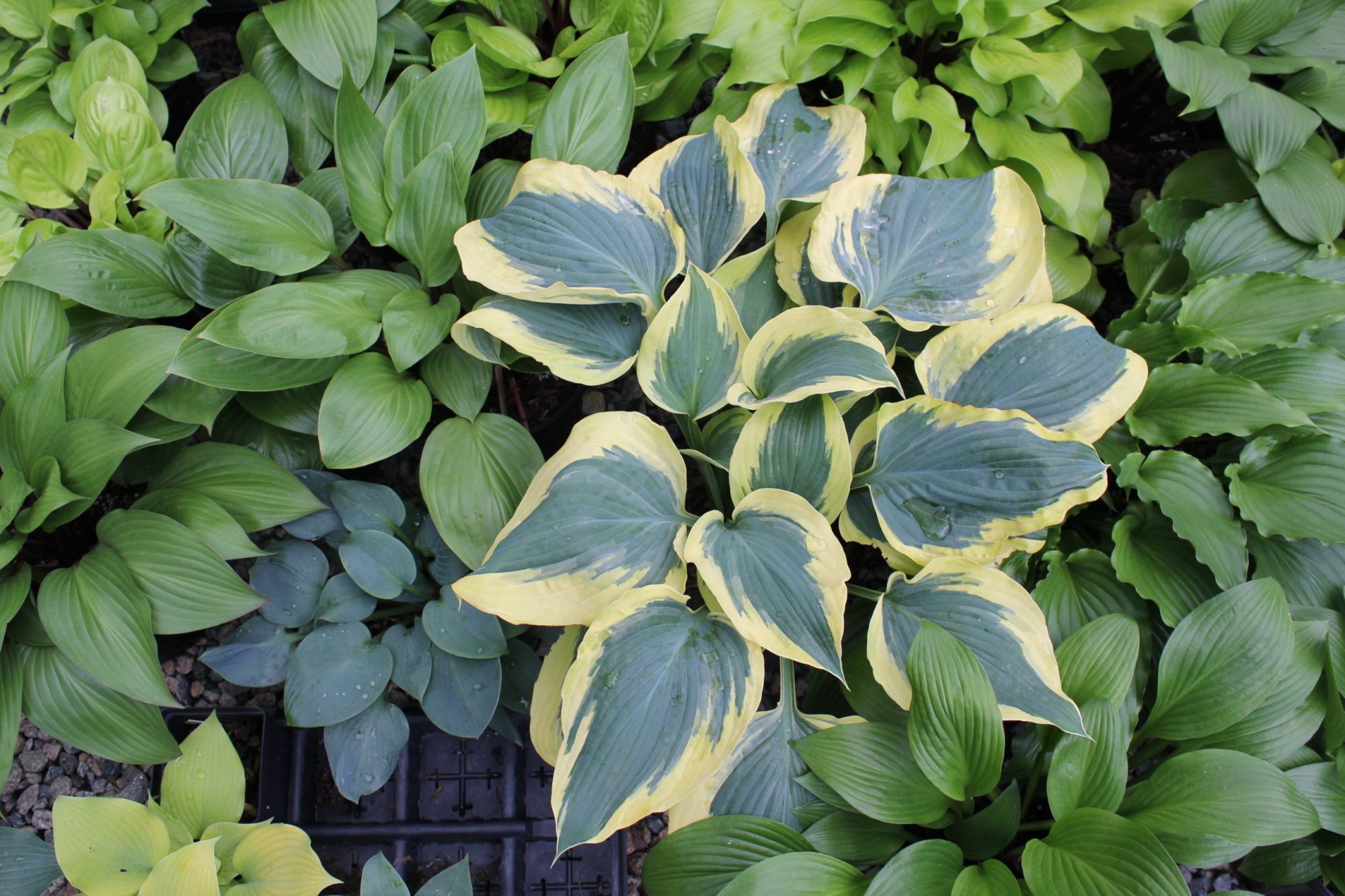Thoughts off the top of my head: November, 2017
I usually write this article first when I begin to compose the “Gossip Jr.” but this time it is last and may prove to be least, at least in words. The other articles wandered in length and I needed to put them in 11 point instead of 12 to make them fit into the eight pages of this newsletter. Anyway, here we go…
“Where are the new hosta collectors coming from?” It is a good question and one the nursery industry is trying to answer in a number of creative ways. Garden centers have events geared to young families but pumpkin carving or really even making fairy gardens does not give parents or kids the hosta bug. Likewise, hosta clubs try all kinds of cleaver alternative meeting opportunities from breakfast hosta chats to hosta bingo to attract new members. While they do maintain and to some extent extend membership numbers, these are activities geared more to folks with grandkids than kids.
The real question may be, “Do people collect anything besides bitcoins, anymore?” I don’t know but my kids do not, they travel. They do have vegetable gardens but with cheap travel options, a generation that grew up in suburbia not in rural America, wants to see the world with their friends. They do want to “decorate”, (we say landscape), their yards but not spend all weekend working in them. Twenty-five different hostas is a lot on a quarter acre lot especially with all that beautiful lawn maintained by Eastern Turf Management.
What’s a hosta lover to do? Be patient. Someday those sunny front yards will become shady. Someday our kids will want to relax in the garden with their grandkids. And if not, we already are working on the next generation. That is why fairy gardens are so popular. It is something that Grandma and her granddaughter can do together, planting the love of plants. Maybe these things just skip a generation.
Well that won’t work for me; I have bills to pay! Since garden centers are working overtime to attract Millennials why don’t we get on that bandwagon? My suggestion to the AHS and local clubs is to work with garden centers to have an “Ask the Hosta Experts” day combined with open gardens.
Some folks will want to come to a morning session of hands on lectures about planting, dividing, siting, and choosing the right 25 hostas for them. Others will want to walk through the afternoon garden tour pushing a baby stroller where the experts again give advice on planting, dividing, siting and suggest which hostas are foolproof. Few will want both; they are not crazy hosta people… yet. Involving garden centers is the key and making the opportunities a couple of hours instead of all day.
I have also suggested we have a National Hosta Garden Open House, maybe some Sunday in June, where hosta gardens are open all over the country. We could even promote it on the Home and Garden Channel if they can find time for it between all the home remodeling shows, better yet on Good Morning America. Think big, this is hostas and we all know once you have been in a hosta garden of hundreds of cultivars you are permanently transformed, bitten by the hosta bug.
So, I hope this lets your mind run wild. Hostas are supposed to fun, so let’s make them fun for everyone, young and old alike. After all, almost everyone in America can have bowl of minis by the backdoor.
Now it is time for a beer! I’ll be right back.
Nursery folks receive a variety of unsolicited trade magazines for free. As with most similar publications, they have been in decline lately but they still seem to get enough advertising dollars to keep them afloat. “Grower Talks” has been around forever it seems. Once a free standing publication it is now paired with “Green Profit” joined at the spine upside down and backwards.
The latest issue of “Grower Talks” instead of its usual nursery related cover photo has a photo of a mug of fresh from the tap, perfectly poured pilsner. Inside the magazine between the articles on culture, crop failure, and steaming weeds was the beer article. It was not however about selling hybrid hops to home brewers or having an Octoberfest promotion at your garden center; it was about of all things pH.
Lynn Griffith tells the story of the invention of the pH meter and yes it begins with beer. It turns out that small differences in pH, the number of hydrogen ions, affects the flavor of beer. In 1909, there was no way to measure these small differences; pH was measured just with litmus paper, blue or red. A Danish chemist working in a brewery, Dr. Soren Sorenson came up with the pH scale that we use now and was later nominated for the Nobel Prize; the beer must have improved radically. By the way, the pH of beer is about 4.5, pretty acid.
It was Dr. Arnold Beckman that in the 1930’s devised the pH meter we use today. Maybe you have used a Beckman meter somewhere along your chemistry lab experiences. He was asked by the California Fruit Growers Exchange to produce a sturdy meter that would accurately measure the pH of citrus juice, lemon juice is 2.4. We all know how certain plants are adapted to certain pHs and how plants can absorb nutrients best in a range of pH from 5 to 7 roughly. We also know that hostas are tolerant of a wide range of pH, both acid and alkaline soils. We might now also guess how the orange slice became involved with Belgium White Ale. It just might have something to do with pH.

